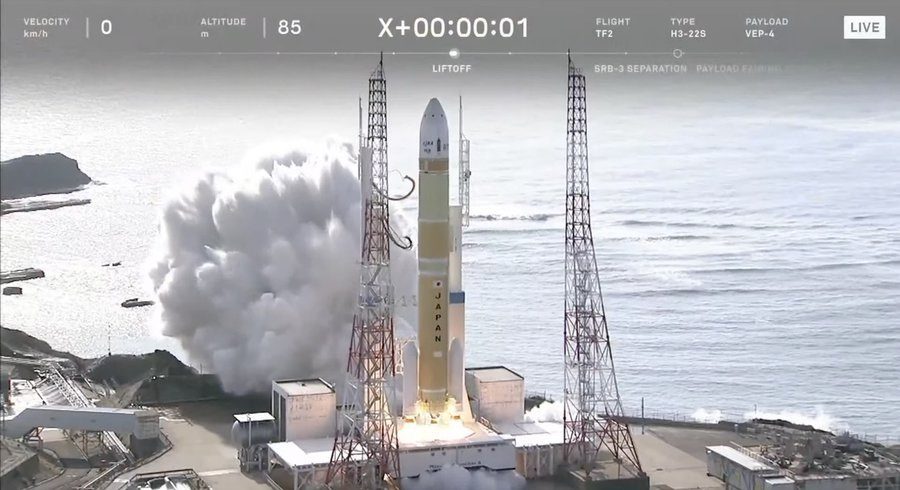H3, Japan’s expendable rocket, has made its first successful flight. The feat comes a year after the rocket’s maiden flight ended in failure and marks a welcome change in fortune for the cost-effective rocket Japan hopes will take it into the future.
The H3-22S rocket was launched from Tanegashima at 0022 GMT on 17 February, on its second test flight. It carried three payloads into a sun-synchronous 680 x 666 km orbit at 98.1 degrees inclination:
- VEP 4, an instrumented dummy payload mimicking a three metric ton ALOS type spacecraft to measure launch and separation parameters such as vibration and acceleration;
- CE-SAT-1E, a small 70 kg mass Earth observation satellite built by Canon Electronics Inc;
- TIRSAT, a small technology test cubesat developed by Japan Space Systems.

H3-22S makes it to orbit on its second flight. Courtesy: JAXA
The maiden launch of the H3 rocket failed on 7 March 2023 due to second-stage ignition failure on LE-5B-3 engine due to an electrical failure. A destruction command was sent and the debris, including that of the ALOS 3 (Advanced Land Observation Satellite 3), fell into the Pacific. A US$12 million insurance loss was incurred due to the failure, although this was only a fraction of the estimated US$200 million value of the spacecraft. An investigation found that while an ignition signal had been received, an electrical system failure prevented ignition taking place.
Comment by David Todd: Japan has had a succession of rockets all aimed at being more economic and technically better than their predecessors. With each version Japan slowly moved closer to its goal, but it never quite achieved enough in terms of cost, until now. With the H3, it looks as though the Japanese have finally got it right: they have produced an economic expendable rocket that can just about compete with the reusable Falcon 9. Congratulations on this flight.
Incidentally, a satellite that will carry out a rendezvous with the upper stage of a Japanese rocket was launched just a day after H3’s successful flight. Astroscale’s ADRAS-J was carried aboard an Electron KS. The vehicle, operated by Rocket Lab, was launched at 1452 GMT on 18 February from the Onenui station on the Mahia Peninsula, New Zealand. The rendezvous and inspection satellite will conduct a rendezvous with the H-IIA upper stage (Catalogue Number 33500, International Number 2009-002J), which lies in a 622 x 557 km sun-synchronous orbit inclined at 98.2 degrees (orbit provided by Jonathan McDowell). We wish the ADRAS-J rendezvous experiment God speed with this innovative mission to inspect a stage from the H3’s forerunner H-IIA.







